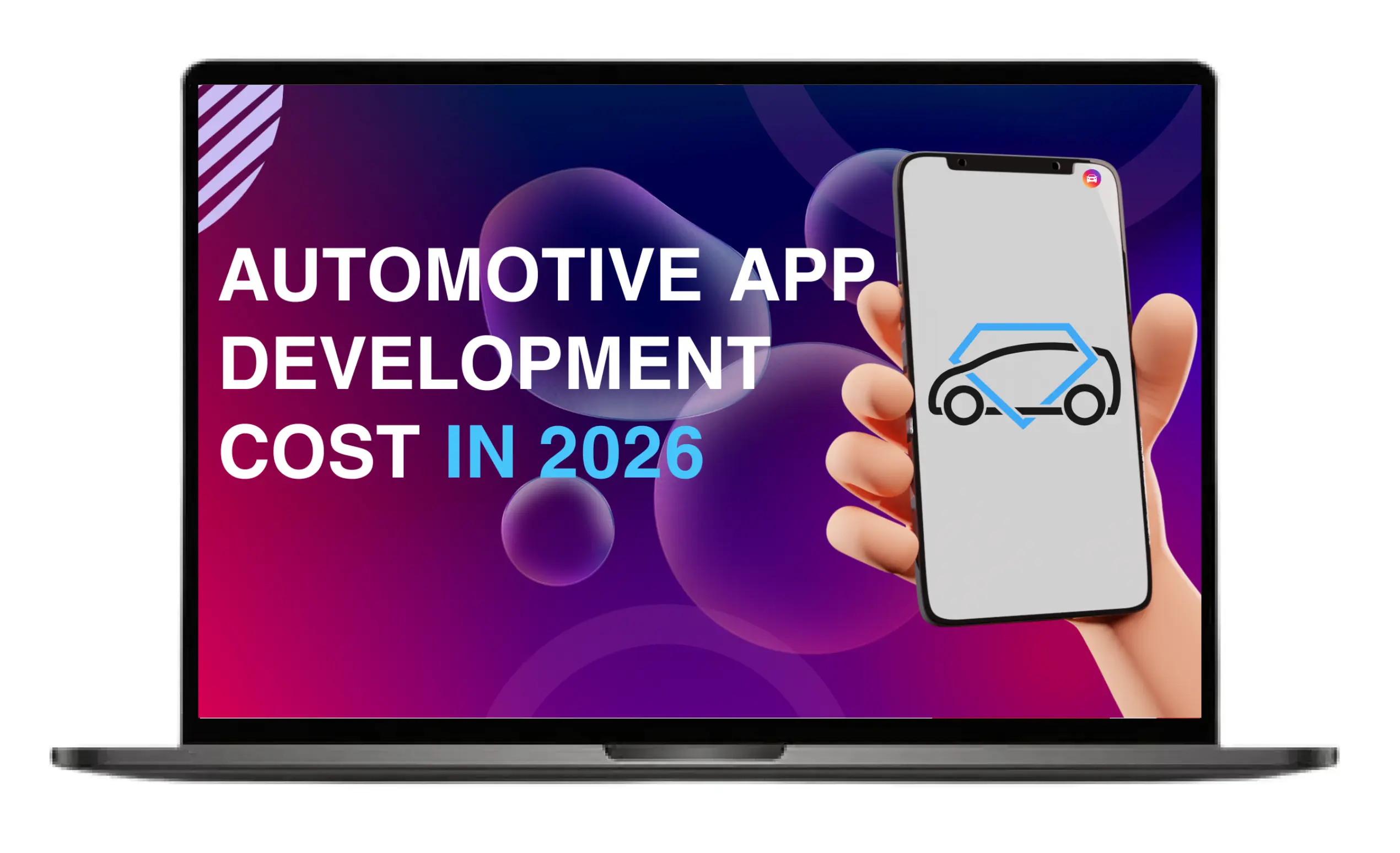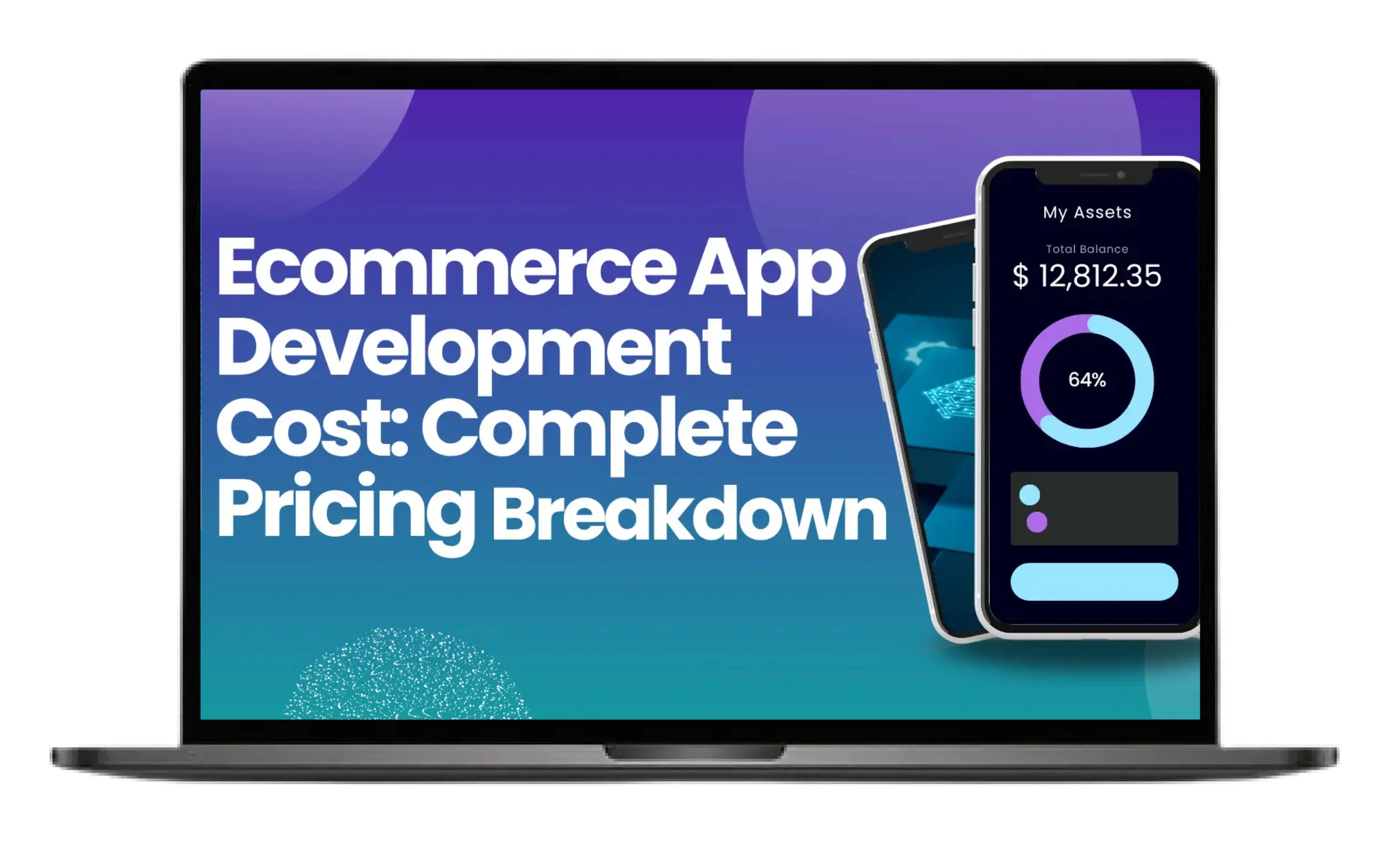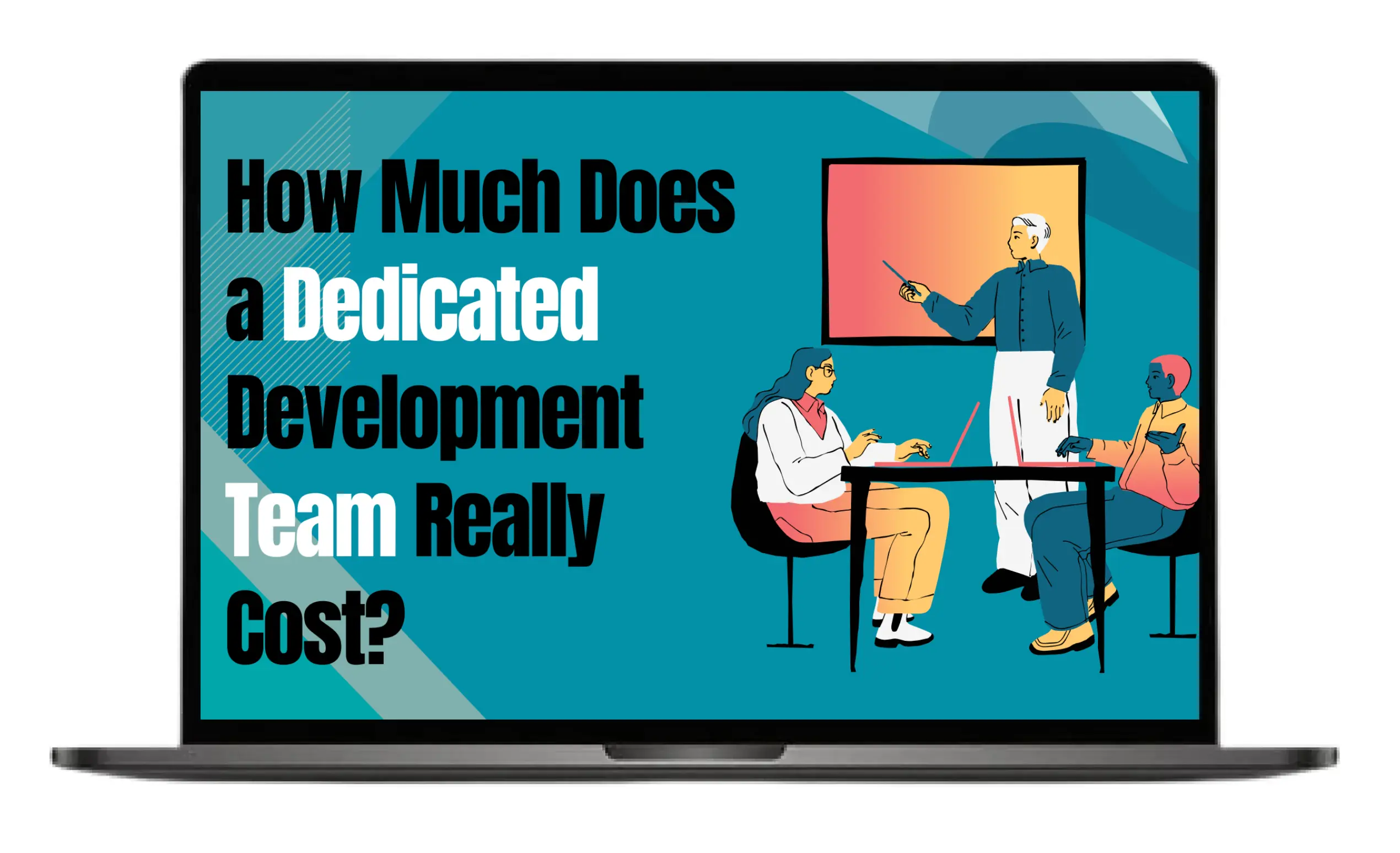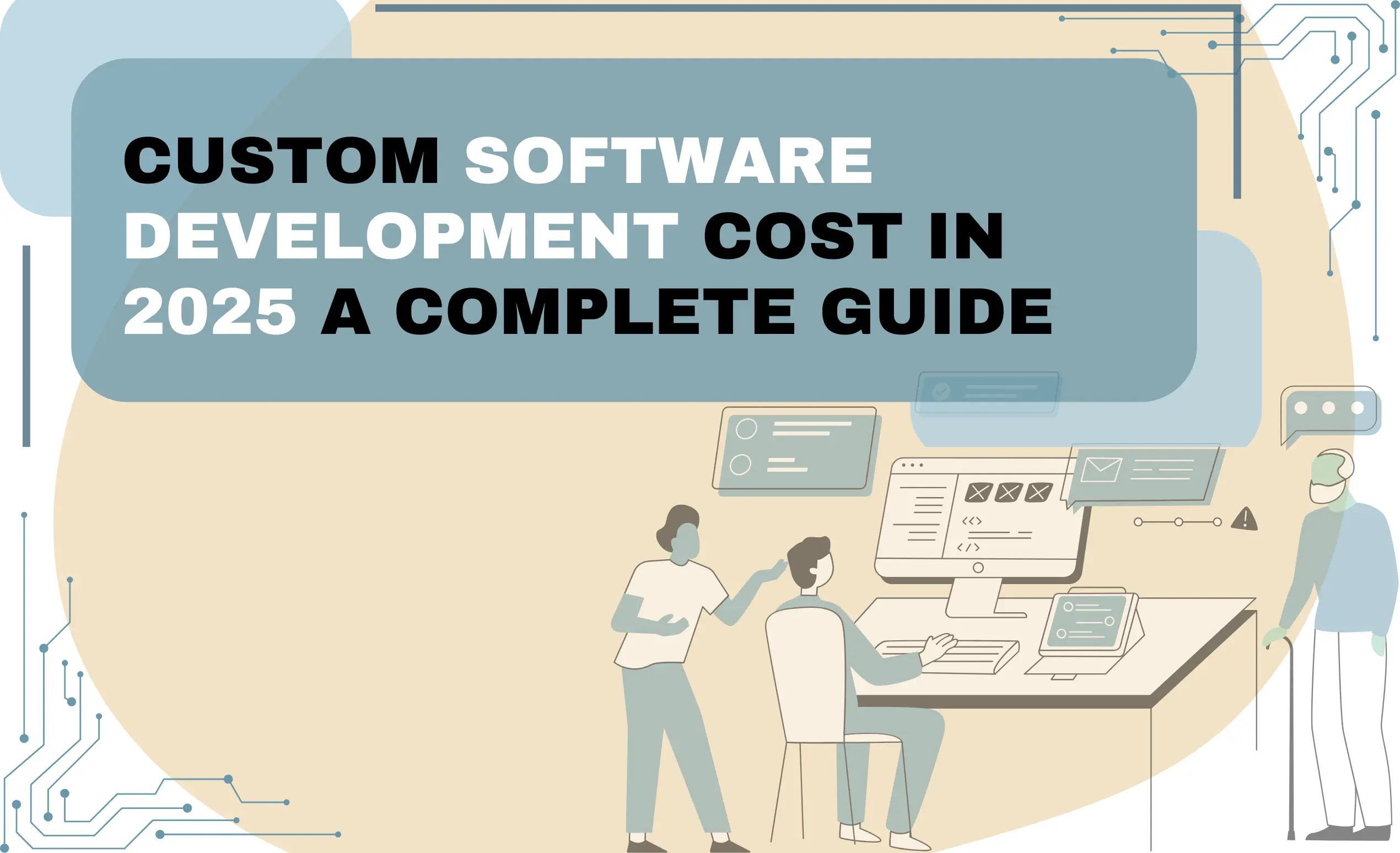
Considering custom software development in 2025? The question that always comes to mind is the cost. It has no fixed price, since it all depends on the size of your project, features and model of pricing which you would prefer. Fixed-price contracts, dedicated teams, each comes with advantages, drawbacks and surprises. This blog will simplify it all using clear examples to enable you to become a more efficient planner.
What is Custom Software Development?
Custom software development refers to development of software which is exclusively developed to address your business needs. Contrary to pre-produced instruments, it is tailored to your specifications. It may be a web application, mobile application, or a big enterprise system. The primary purpose is putting you in control and finding solutions to your problems.
What does it cost in 2025?
The price of custom software in the U.S. in 2025 is between $30,000 and $250 000 A small MVP/startup app can cost between $30k-50k. Medium size SaaS platforms can be priced at $80k -150k. The large enterprise systems having a large number of modules can cost more than $250k. The overall cost is subject to scope and complexity and the chosen model.
Software Cost Formula
The formula to calculate the cost is:
Total Cost = Time Development x Hourly Rate
- Development Time denotes how many hours are required to perform the various design, coding, testing and deployment.
- Hourly Rate is a factor of region and experience of developers. It is usually between 80 and 150 dollars per hour in the U.S. to the developers.
For example, in case there is a 1,000 hour project and the average rate is 100 dollars/ hour, then the estimated costs would be approximately 100,000 dollars.
Common Custom Software Development Cost Models
The custom software developments have multiple options of payment methods in 2025. Every pricing model has its rules, pros, and cons. Following are the five best models:
Fixed-Price Model
Fixed price model implies that cost, scope, and length of time are decided at the start of the project. The seller provides what is stated in the agreement. This model is efficient in the projects that require clear requirements and strict deadlines. This model is secure in budget, but rigid on changes.
Pros
- You have a predictive budget and no unexpected invoices.
- Your involvement as a client is minimal.
- Certain rules of acceptance allow both parties to understand when the project is complete.
Cons
- Any change in requirement is an additional cost and can cause delay.
- The initial estimate is high because the seller usually adds a risk margin.
- In case of unclear requirements, misinterpretation or even disputes may occur.
Time & Material (T&M) Model
Time and material model implies that you are charged based on the actual time and resources utilized in completing the project. There are two weeks sprints and you are able to change scope and priorities as you progress. It is adaptable and can be used where requirements are not clear from the star.
Pros
- You are flexible with costs as you only pay what you work.
- The model permits scope adjustment and feature changes throughout development.
- It facilitates the process of scaling up or down without having to renegotiate any contracts.
Cons
- The total budget can be raised in case of the expansion of the requirements.
- Your regular feedback and attention are needed in the project.
- Time overruns, without proper planning, may increase the overall costs.
Dedicated Team Model
In the dedicated team model, you are renting a whole team for a month. This includes developers, QA, DevOps, and a project manager. The team focuses exclusively on your project. They understand the project deeply. The model is suitable for long term projects and continuous product development.
Pros
- The project team develops an in-depth understanding of your product which boosts efficiency.
- It is cheaper than T&M in the long run.
- The size and competency within the team is adaptable which matches the project requirements.
Cons
- It is more expensive on a monthly basis than short-term contracts.
- It might not fit small or one off projects.
- To support the team, you must have continual budget commitment.
Hybrid / Milestone-Based Model
The hybrid or milestone model divides the payments into portions according to the project milestones. For example, 40 percent at the beginning of the project, 30 percent in the middle and 30 percent upon delivery. It reduces risk to both the client and the vendor. It includes a checkpoint to review the progress prior to the next payment.
Pros
- The payments are linked to progress which reduces the risk of financial failure.
- It also establishes concrete milestones where the project can be checked and readjusted.
- This model allows greater control of large projects than in lump-sum projects.
Cons
- It needs thoughtful planning of milestones and deliverables.
- In case of change in scope, you need to negotiate milestone agreements.
- Delays with milestones can cripple vendor cash flow.
Value Based Pricing Model
This model bases payment on the real business outcomes. As an alternative to hourly payment, you pay a fixed rate linked with KPIs. These KPIs include revenue increase, cost reduction, or customer conversions. This model is effective when the software produces a direct effect on business results.
Pros
- It links the success of the vendor with your business success.
- The vendor works to provide the best value.
- It has the potential to decrease upfront expenditures. It is due to the fact that a portion of the payment is based on outcome.
Cons
- It can be difficult to measure the business results.
- You need very strong contracts to contextualize the KPIs and prevent conflicts.
- It depends on trust and openness between client and vendor.
At Red Star technologies, we provide all the significant cost models. Select Fixed-Price to see clear budgets, Time & Material to be flexible, or Dedicated Team to deliver long projects. We also offer Hybrid milestone payments and Value-Based pricing. All the models will suit your budget and the business needs.
Average Hourly Rates by Region
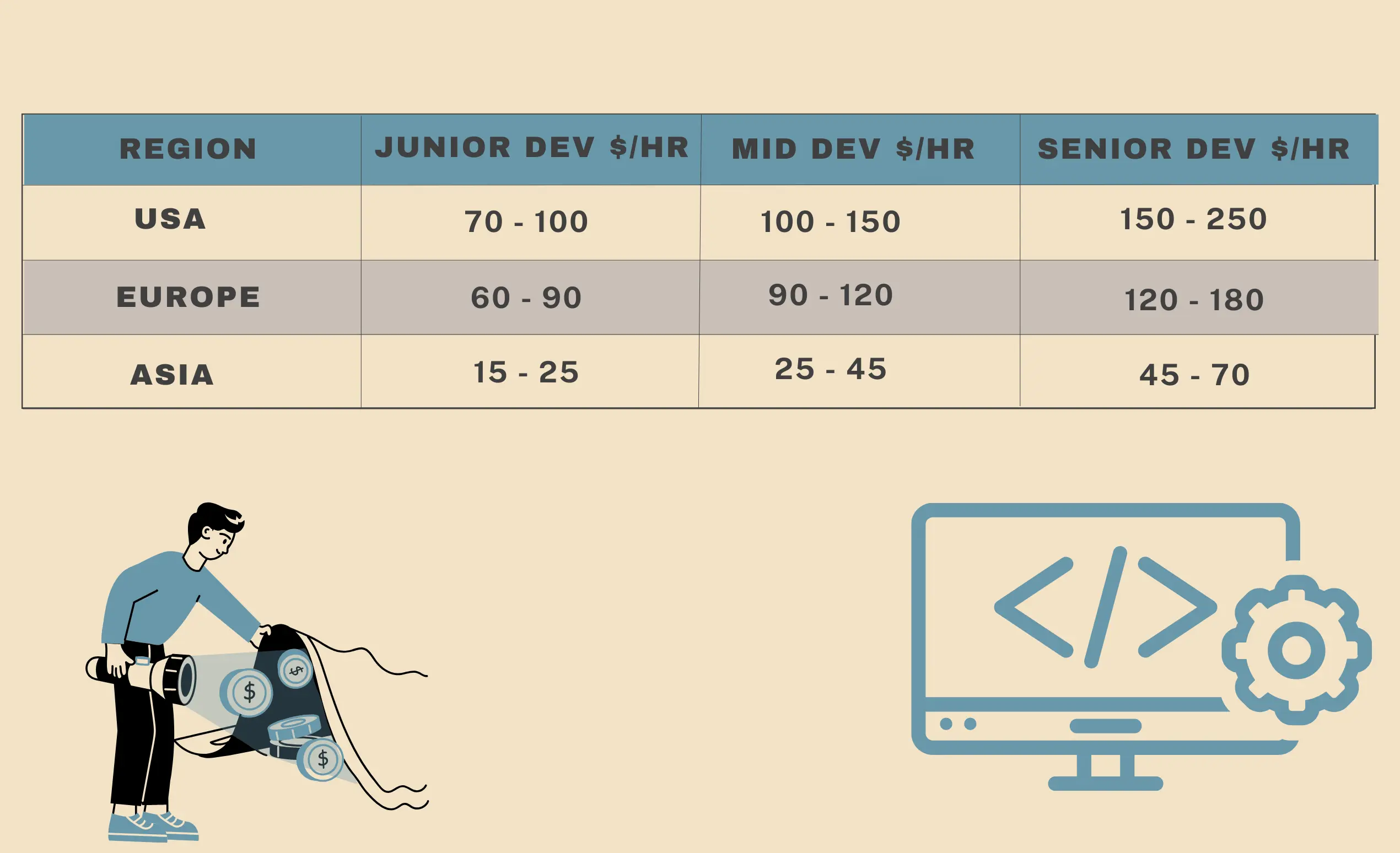
Top 7 Factors that Influence Software Development Costs
Following are the top seven factors that can increase the costs of custom software development cost:
Scope and features
Software cost is proportional to number of features, screens and user roles. If you expand the features or user categories, the project also becomes expensive.
Technical Complexity
When the software is developed on the basis of an advanced tool, real-time data, strict regulations, then it is difficult to develop. The more complex the project is, the more money it costs.
UI/UX design
Streamlined designs that include the use of ready-made designs are cheaper. Custom graphics, animations and extensive user experiences will cost thousands of dollars to the project.
Compliance and Security
Effective security and official compliance procedures are required in most industries. These can cost the additional sum up to $15,000-30,000 and more.
Skill and Team Location
The location of the team has an enormous influence on the price. Employing developers in the United States is the most costly and offshore teams could save 30 percent to 60 percent.
Cloud and Infrastructure
The budget is also influenced by hosting, databases and servers. Costs of this sort can be reduced by up to 40 percent with serverless systems or cloud credits.
Post-Launch Support
The software also requires update and fix after the launch. It is around 15 percent to 20 percent of the initial project investment per year by way of support and maintenance.
Custom Software Development Cost Breakdown by Type
- Web Application: A custom web application typically costs between $40,000 and $200,000.
- Enterprise Solutions: Systems like HR, CRM, and ERP cost $100,000 and $500,000.
- Mobile Apps: It cost between $40,000 and $200,000. It depends on design and complexity.
- AI, ML & Cloud-Based Solutions: Cloud based platforms, machine learning, and advanced AI costs about $50,000 to $300,000.
Five Proven Ways to Reduce Custom Software Development Cost
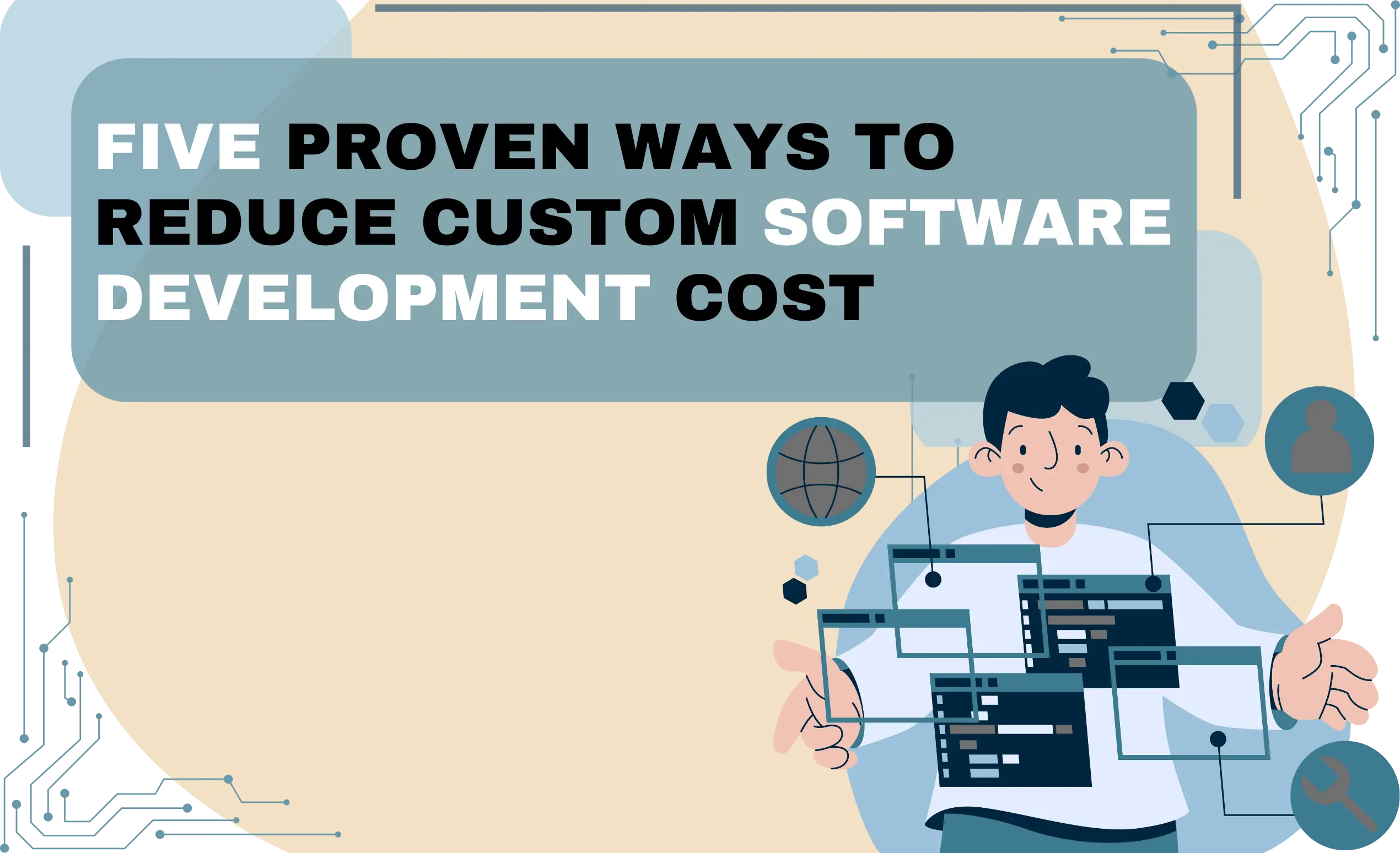
Following are the five ways to reduce the costs of custom software development:
Prioritize Features
You must always focus on the most important features as any addition can increase costs. You must prioritize the Minimum Viable Product (MVP). It helps you in fast launching and better testing. You can add new features if there is a need after users use your product.
Reuse Before You Build
In building custom software, you do not have to build everything from scratch. You must use freely available tools, services, and libraries. Reusing existing tools enhances reliability because these tools are already tested and used. It also reduces costs.
Automate Testing and Deployment Early
If you fix bugs at early stages then you can save four times the cost than resolving bugs late in development. You must employ automated testing and deployment to avoid costly delays. These automated pipelines can help you release new features in a better way.
Pick the Right Team
Your team’s expertise and location matter a lot. As mentioned above, there are variations in prices in different regions. You must choose a mixed team. For example, you can choose product managers locally and assign testing tasks to teams from other regions. You must also balance the senior and mid level developers to reduce the costs.
Limit Post-Launch Support
If your agreement compels you to provide post launch support then it can increase to 20-25% of initial product costs if not managed well. You must clearly set a fixed hours in agreement for which you will provide support. You must define the warranty period for bug fixes and decide in advance how much you will spend on them.
Why is Red Star Technologies Cost Effective in Custom Software Development?
Following are the reasons why Red Star Technologies is a cost effective partner in custom software development:
- Clear Pricing: We give transparent descriptions of prices.
- Intelligent Resource Mix: We mix senior and mid-level talent to maximize cost and quality.
- Quicker Delivery: Underlying automation and DevOps allow us to reduce costs and deliver fast.
- Reusable Tools: We use tested frameworks and libraries as a way to reduce cost.
- Flexible Engagement Models: Clients select engagement models at a rate that is most aligned with their budget and objectives.
FAQs
1. What is the cost of custom software development in 2025?
It ranges between $30,000-250,000+. MVPs on the lower end are small, whereas high-end enterprise platforms with many modules and advanced features can be substantially higher.
2. What are the biggest determinants of the price?
The factors that are important are scope, complexities, level of design, location of the team, the need of security, and support after the launch. All these directly add or subtract the general budget.
3. Does custom software cost more than off-the-shelf software?
Yes, it is more expensive in the beginning. However, custom solutions are developed to be used alongside your exact business processes which helps minimize inefficiency and cost in the long-term.
5. Is it possible to save on the price of custom software?
Yes, by focusing only on the essential features, re-use of ready tools and off-shoring the development to low cost locations. This aids in preventing overspending.
6. Which is more cost effective, web or mobile?
Web apps tend to be less expensive since they are used over browsers. Mobile apps tend to be more expensive, because they might require iOS, or Android specific versions and development, or cross-platform development.
7. Will I be in need of maintenance once launched?
Yes, routine updates, corrections on bugs, and upgrades are demanded. This costs 15-20 percent of the initial cost of development per year.








